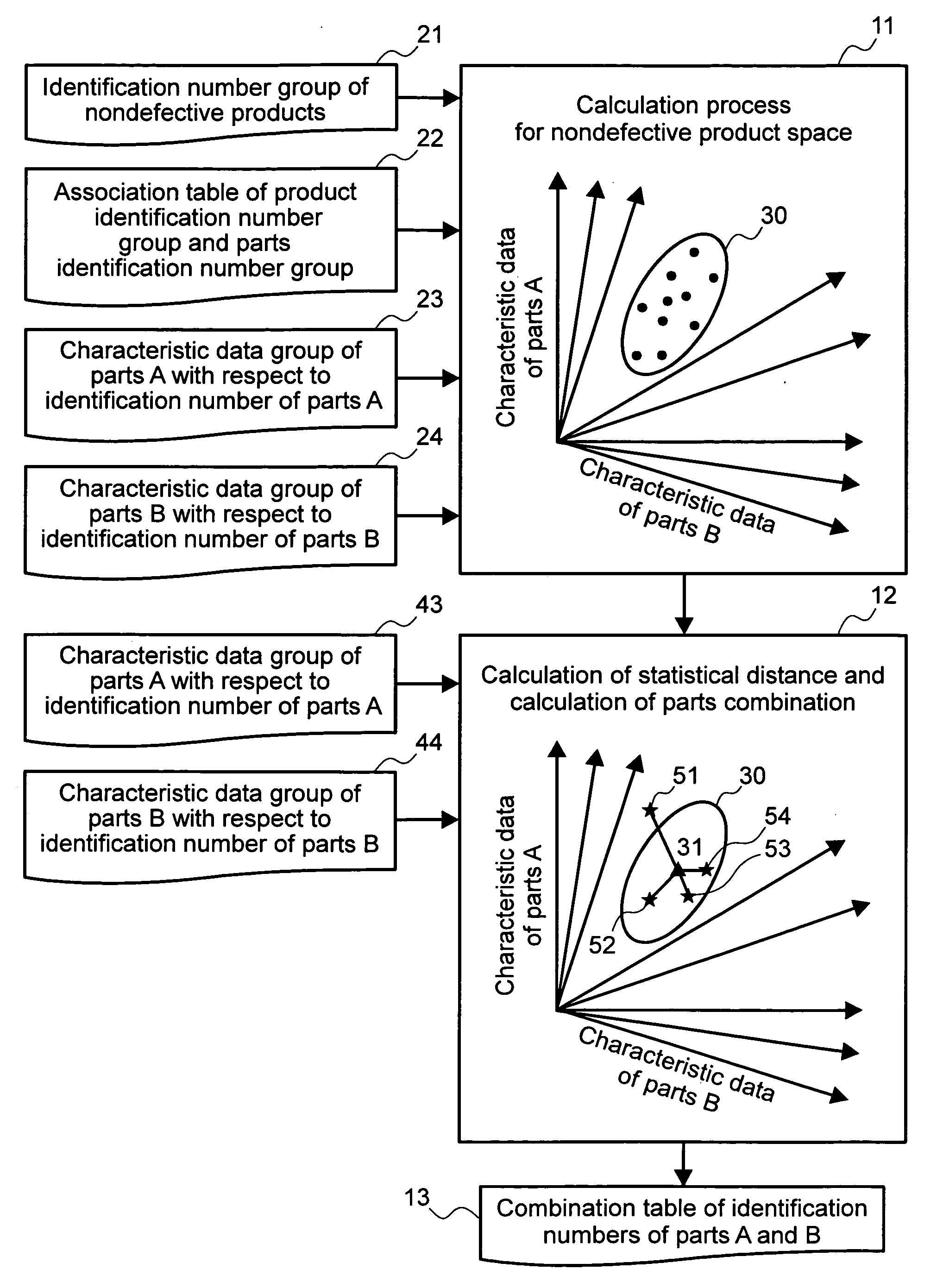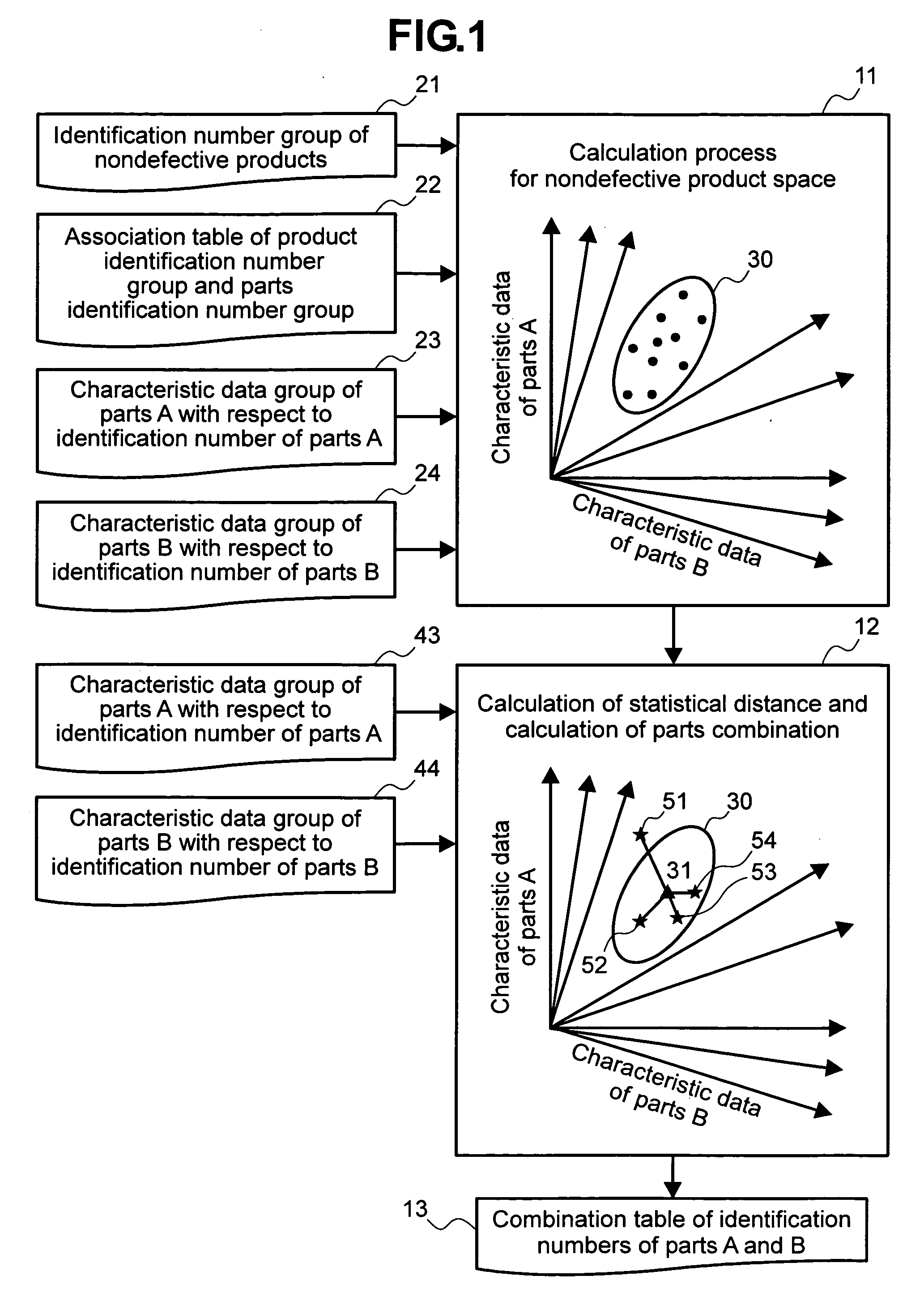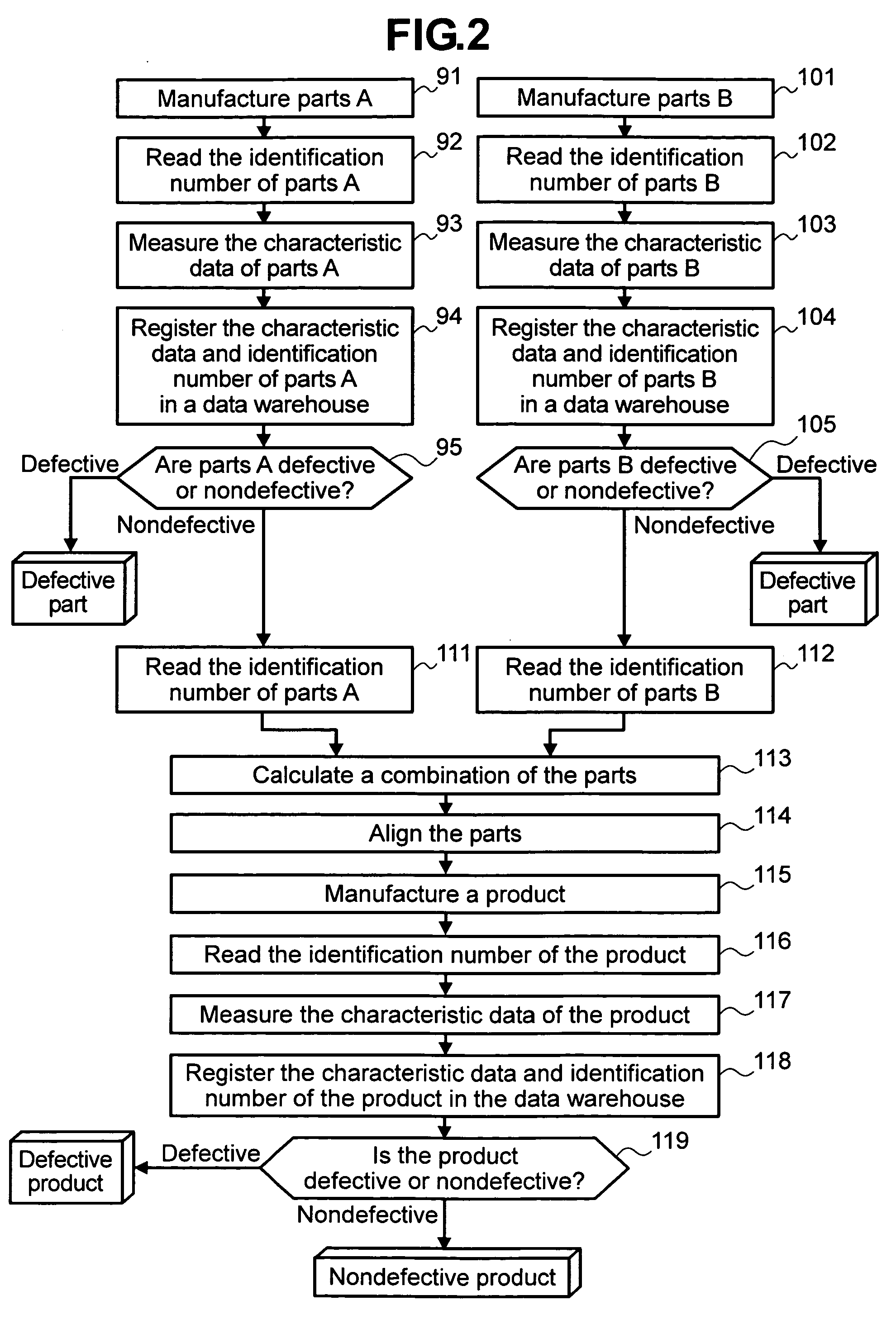Method for manufacturing product formed with a plurality of parts and method for combining parts
- Summary
- Abstract
- Description
- Claims
- Application Information
AI Technical Summary
Benefits of technology
Problems solved by technology
Method used
Image
Examples
first embodiment
(First Embodiment)
[0031]FIG. 2 is a diagram that shows an example of a flowchart of manufacturing process steps for products which are completed by manufacturing parts A and parts B independently and assembling the two kinds of parts as major components of a product. The parts A are manufactured in step 91, identification numbers (serial numbers) of the parts A are read in step 92, and characteristic data of the parts A is measured in step 93. In step 94, the identification numbers of the parts A that have been read in step 92 and the characteristic data of the parts A that has been measured in step 93 are registered in a data warehouse. Next, step 95 is executed to judge whether the parts A are defective or nondefective. If any parts A are judged to be nondefective in step 95, only those parts A are transferred for processing to step 111. Similarly to parts A, parts B are manufactured in step 101, identification numbers of the parts B are read in step 102, and characteristic data o...
second embodiment
(Second Embodiment)
[0054] Next, an embodiment of the present invention when applied to manufacturing a magnetic storage device will be described hereunder. A manufacturing process therefor will be first described using FIGS. 14 to 17. FIG. 14 shows an example of a flowchart of manufacturing process steps for a magnetic head which is a major component of the magnetic storage device. Magnetic heads can be roughly divided into upper magnetic heads for reading / writing data from an upper side of a disk, and lower magnetic heads for reading / writing data from a lower side of the disk. FIG. 14 shows an example of a flowchart of manufacturing process steps for an upper magnetic head. The upper magnetic head is manufactured in step 201, and an identification number of the upper magnetic head is read in step 202. Next, characteristic data of the upper magnetic head is measured in step 203. In step 204, the identification number that has been read in step 202, and the characteristic data that h...
third embodiment
(Third Embodiment)
[0059] Next, a description will be given of an embodiment which utilizes the present invention in a simplified fashion when, in the generalized product-manufacturing processes described in FIGS. 2 and 3, the number of products which have been completed as nondefectives in advance is too small for a nondefective product space to be calculated beforehand, as in a startup phase of mass production of a new device or in a test production phase thereof.
[0060]FIG. 19 shows an example of a processing procedure to be used to utilize the present invention in a simplified fashion. In a test production phase of a high-technology hardware product such as a magnetic storage device or multi-chip module, the number of products completed as nondefectives may be too small for processing to be executed in step 11. In such a case, as in step 11, mean values, standard deviations, and a correlation matrix are not calculated per (Formula 1), (Formula 2), and (Formula 5) respectively by ...
PUM
 Login to view more
Login to view more Abstract
Description
Claims
Application Information
 Login to view more
Login to view more - R&D Engineer
- R&D Manager
- IP Professional
- Industry Leading Data Capabilities
- Powerful AI technology
- Patent DNA Extraction
Browse by: Latest US Patents, China's latest patents, Technical Efficacy Thesaurus, Application Domain, Technology Topic.
© 2024 PatSnap. All rights reserved.Legal|Privacy policy|Modern Slavery Act Transparency Statement|Sitemap



